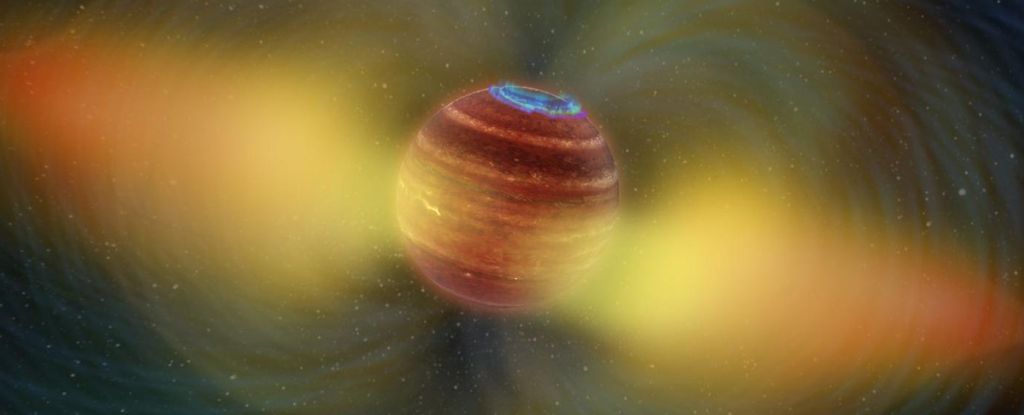Astronomers have imaged a radiation belt around an extrasolar object for the first time. The object is a red dwarf star named LSR J1835+3259, which has about 77 times the mass of Jupiter and sits some 20 light-years away. This discovery is significant because all planets in our Solar System with global magnetic fields have radiation belts, suggesting that there should also be radiation belts wherever there is a stable, global magnetic field.
Imaging the Magnetosphere of LSR J1835+3259
Detecting the faint emission from an extrasolar radiation belt is challenging since the dim glow of a radiation belt is difficult to resolve. However, astronomers have used a network of 39 radio telescopes across the globe to effectively create an Earth-sized radio telescope. They took observations of the star, looking carefully at the space around it, where a radiation belt, viewed from the side, would appear like two radio-emitting lobes. Images revealed a double-lobed structure around the star, emitting faint radio waves, similar to the lobes of Jupiter’s radiation belt.
Confirming the Presence of Radiation Belts in Extrasolar Objects
Low-mass stars and brown dwarfs have exhibited activity similar to the auroras in the Solar System, suggesting the presence of a global magnetic field. LSR J1835+3259 represented the perfect place to look closely for radiation belts. These findings not only confirm that objects such as stars can have radiation belts, but they also mean that we may have already seen radiation belts in other such objects and didn’t know what we were looking at.
The radiation observed is a type that has been seen before in low-mass stars and brown dwarfs, but it had been attributed to flares in the stellar corona. However, now that astronomers have established that this particular kind of steady-state, low-level radio emission traces radiation belts in the large-scale magnetic fields of these objects, they can more confidently say that brown dwarfs and gas giant exoplanets probably have a big magnetic field, even if our telescope isn’t big enough to see the shape of it.
Implications of the Discovery
This discovery is a critical first step in finding many more such objects and honing our skills to search for smaller and smaller magnetospheres. Tools that allow us to find magnetic fields around other worlds will help us find similarly protected planets. Earth’s magnetic field is thought to be essential for life to flourish since it deflects harmful solar radiation from reaching the surface, protecting the atmosphere and the vulnerable organisms that inhabit the surface. Astronomers hope that this result will help search for potentially habitable worlds in the future as techniques and instruments are refined.
Astronomers have imaged a radiation belt around an extrasolar object for the first time, confirming that objects such as stars can have radiation belts. This discovery is significant because it puts us on the right path to finding many more such objects and honing our skills to search for smaller and smaller magnetospheres. Tools that allow us to find magnetic fields around other worlds will help us find similarly protected planets, which is essential for life to flourish.


Leave a Reply